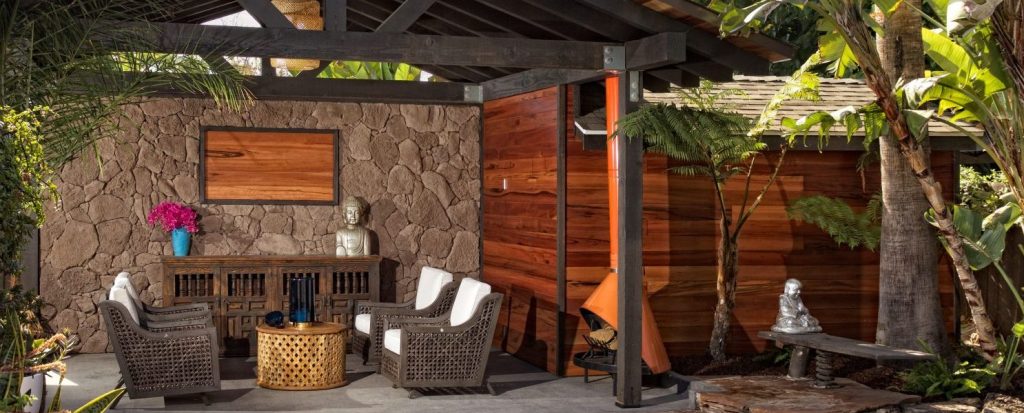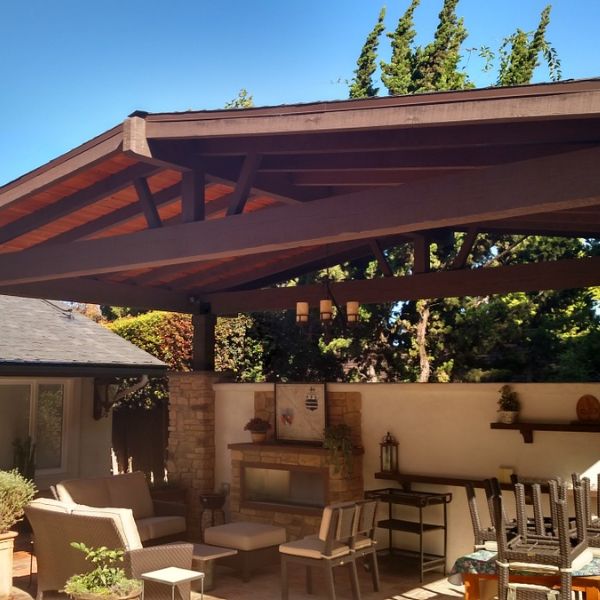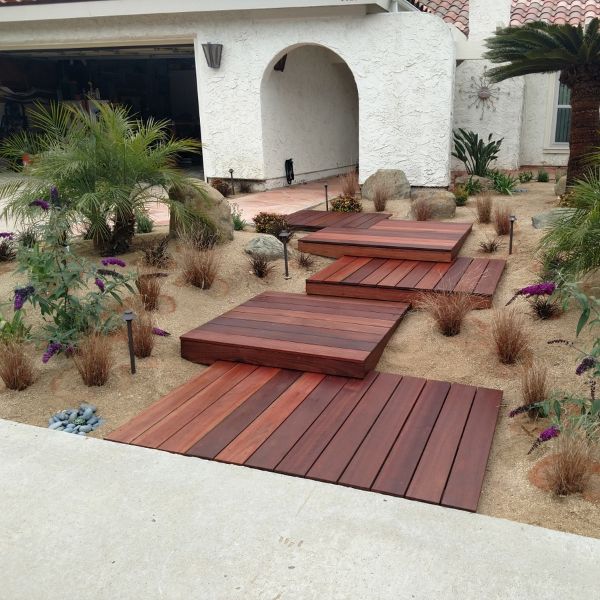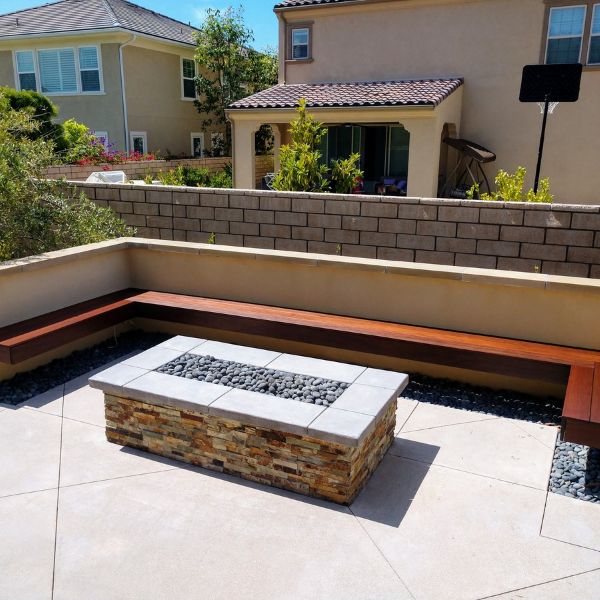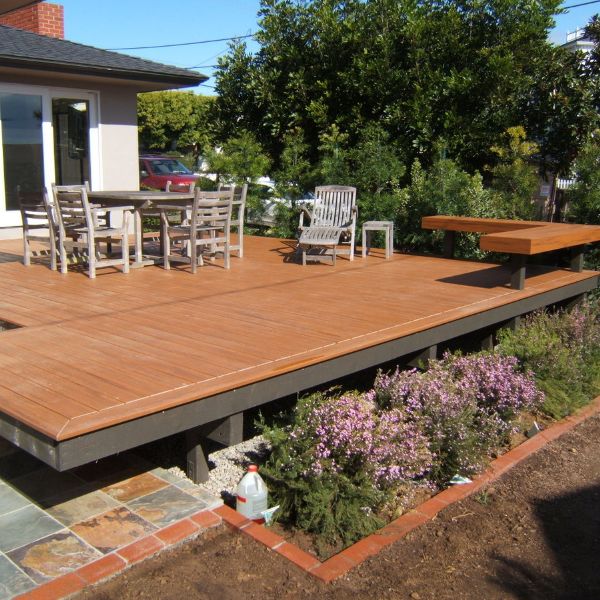Bring Nature to Your Doorstep
In today’s world, where environmental concerns are becoming increasingly important, creating a sustainable backyard is not only beneficial for the planet but also for your well-being. Eco-friendly landscaping practices can help conserve water, promote biodiversity, and reduce waste.
Wilson Woodscape can help you create the sustainable backyard of your dreams. Discover the various tips and ideas from our San Diego landscape contractor, Jeff Wilson, to help you transform your backyard into an environmentally friendly area.
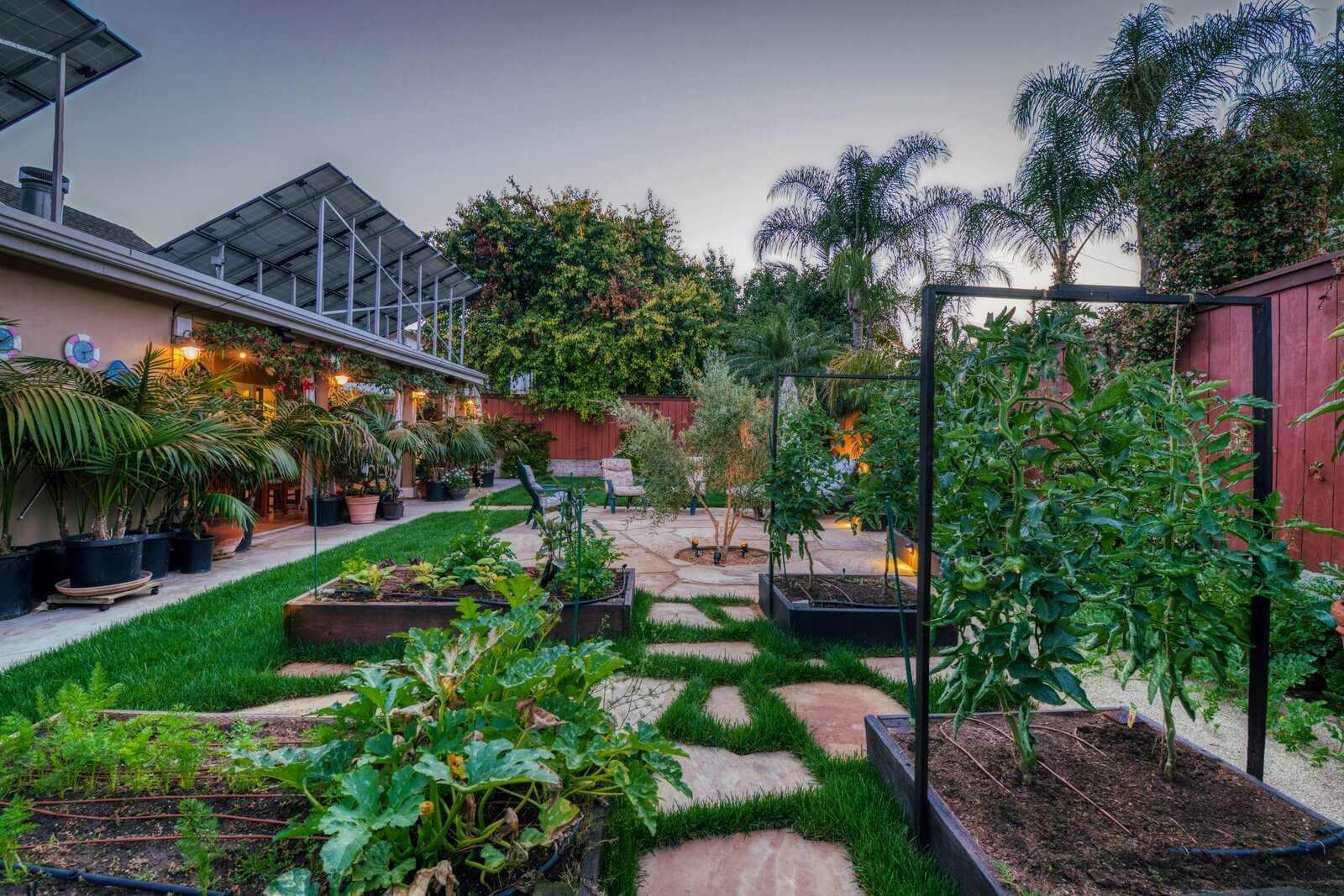
Understanding the Benefits of Eco-Friendly Landscaping
Conservation of Water
Water is a precious resource, especially in regions with dry climates like San Diego. Eco-friendly landscaping techniques enable you to conserve water significantly. By implementing efficient irrigation systems, such as drip irrigation and smart sprinklers, you can minimize water waste and ensure that the water is used precisely where it’s needed. Conserving water not only helps preserve this valuable resource but also lowers your water bills and reduces the strain on local water supplies.
Preservation of Natural Resources
Eco-friendly landscaping practices play a vital role in preserving natural resources. By choosing native plants, you reduce the need for excessive watering, chemical fertilizers, and pesticides. Native plants have adapted to the local environment and require less maintenance, saving water and reducing the use of harmful chemicals.
Sustainable lawn care practices, such as proper mowing height and leaving grass clippings on the lawn, minimize the need for synthetic fertilizers, thus preserving the quality of soil and groundwater.
Reduction of Pollution
Conventional landscaping practices often involve the use of chemical pesticides, herbicides, and synthetic fertilizers, which can have detrimental effects on the environment and human health. Eco-friendly landscaping focuses on using organic and natural alternatives, reducing the reliance on harmful chemicals. By avoiding the use of these pollutants, you can help protect local water bodies, prevent soil contamination, and create a safer environment for your family and pets.
Improved Air Quality
Eco-friendly landscaping can significantly contribute to improved air quality. Trees and plants act as natural air filters, absorbing carbon dioxide and releasing oxygen. By incorporating a variety of trees and plants in your backyard, you enhance air quality by reducing the concentration of pollutants and creating a healthier atmosphere. Additionally, by reducing the use of gas-powered lawn equipment and opting for manual or electric alternatives, you minimize air pollution and noise levels in your neighborhood.
Promotion of Biodiversity
One of the essential benefits of eco-friendly landscaping is the promotion of biodiversity. By incorporating native plants into your backyard, you provide habitat and food sources for local wildlife, including birds, butterflies, bees, and beneficial insects. This supports the ecosystem, strengthens the local food chain, and contributes to the overall health and balance of the environment.
Aesthetically Pleasing and Functional Design
Eco-friendly landscaping doesn’t mean compromising on beauty and functionality. Sustainable practices often lead to creative and visually appealing outdoor spaces. By using eco-friendly materials for hardscaping elements, such as pathways and patios, you can achieve a unique and attractive design while minimizing the environmental impact. Additionally, incorporating features like rain gardens, bird feeders, and seating areas enhances the functionality and enjoyment of your backyard.
Psychological and Physical Well-being
Spending time in a sustainable backyard can have a positive impact on your mental and physical well-being. Being surrounded by nature and green spaces has been shown to reduce stress, improve mood, and enhance cognitive function. Engaging in gardening activities and enjoying the natural beauty of your eco-friendly landscape can also provide physical exercise and relaxation, further contributing to your overall well-being.
Water Conservation and Efficient Irrigation
Conserving water is of utmost importance, particularly in arid regions like San Diego. By implementing efficient irrigation systems and adopting water-saving practices, you can significantly reduce water waste and contribute to a more sustainable backyard.
Here are some key tips for water conservation and efficient irrigation:
- Install Drip Irrigation: Drip irrigation systems deliver water directly to the roots of plants, minimizing evaporation and ensuring efficient water usage. By providing a slow and steady release of water, drip irrigation systems can reduce water waste by up to 50% compared to traditional sprinklers.
- Utilize Smart Sprinklers: Smart sprinkler systems utilize advanced technology to optimize watering schedules based on real-time weather data, soil moisture levels, and plant water requirements. These systems automatically adjust watering times and durations, ensuring that your plants receive the right amount of water without unnecessary waste.
- Mulch to Retain Moisture: Applying a layer of organic mulch, such as wood chips or straw, around plants and in garden beds helps retain soil moisture by reducing evaporation. Mulch also acts as a natural weed suppressant, minimizing competition for water and nutrients while enhancing the overall health of your plants.
- Group Plants with Similar Water Needs: Grouping plants with similar water requirements together allows for more efficient irrigation. By separating water-thrifty plants from those that require more water, you can avoid overwatering and ensure that each plant receives the appropriate amount of water.
- Consider Xeriscaping: Xeriscaping is a landscaping approach that focuses on water-efficient design and drought-tolerant plants. By incorporating native plants and utilizing water-saving techniques such as strategic placement of plants, soil improvement, and proper mulching, xeriscaping minimizes the need for irrigation while maintaining an attractive and sustainable landscape.
- Capture Rainwater: The Rainwater Act of 2012 allows people in California to install a rainwater harvesting system to collect and store rainwater for later use in irrigation. This sustainable practice not only reduces reliance on municipal water sources but also provides a free and abundant water supply during rainy seasons.
- Monitor and Adjust: Regularly inspect your irrigation system for leaks, broken sprinkler heads, or any other issues that may lead to water waste. Periodically check soil moisture levels to avoid overwatering, as excessive irrigation can be detrimental to plant health and waste water unnecessarily.
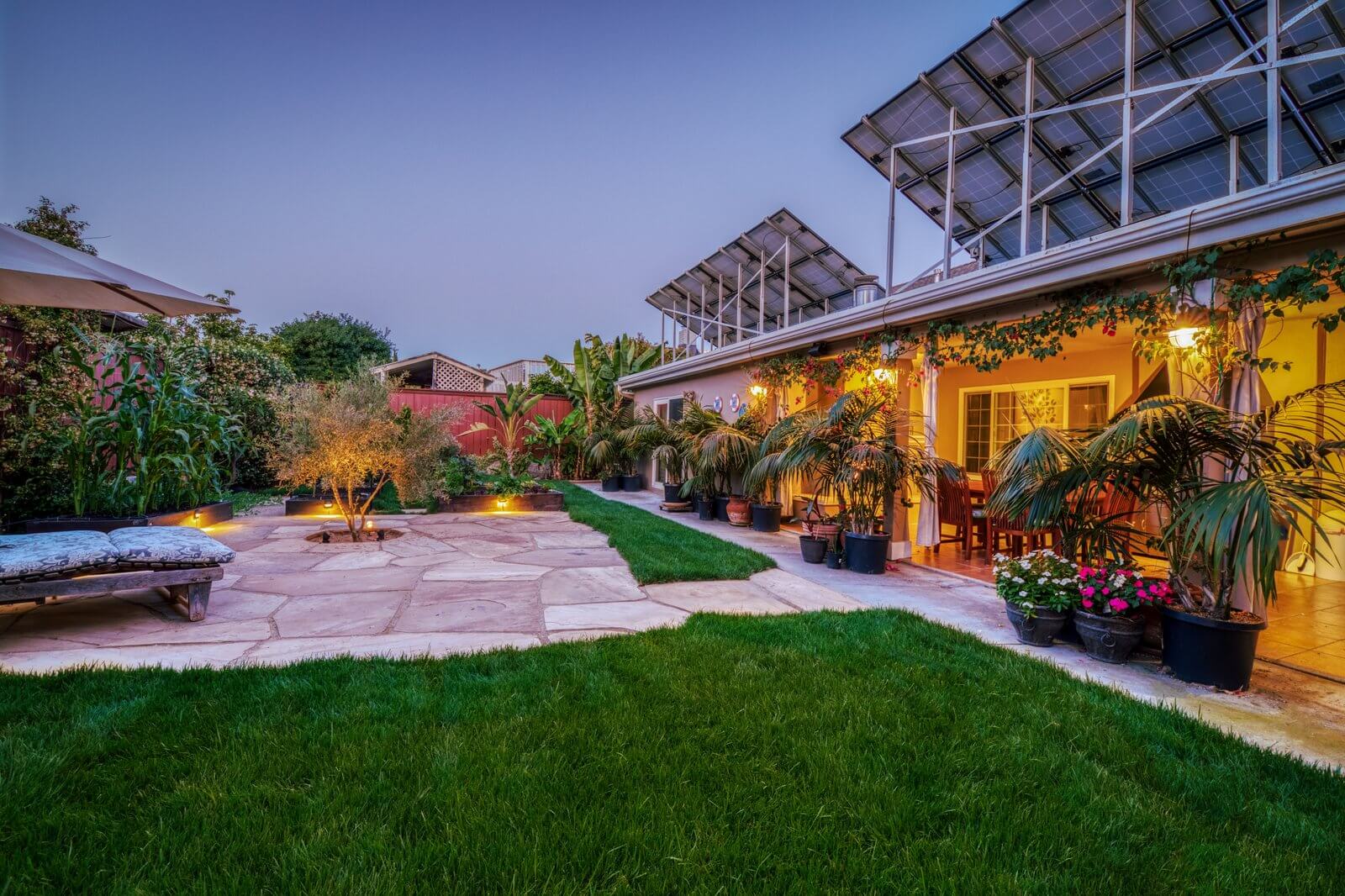
Native Plants and Biodiversity
Using native plants in your backyard landscaping offers multiple benefits. They’re well-suited to the local climate, requiring less water and maintenance. Native plants also provide habitat and food sources for local wildlife, contributing to biodiversity.
Some native plant species that thrive in the San Diego area include:
- California Poppy (Eschscholzia californica)
- California Lilac (Ceanothus spp.)
- Cleveland Sage (Salvia clevelandii)
- California Sunflower (Encelia californica)
- California Buckwheat (Eriogonum fasciculatum)
- Toyon (Heteromeles arbutifolia)
- California Fuchsia (Epilobium canum)
- Coast Live Oak (Quercus agrifolia)
- Blue-eyed Grass (Sisyrinchium bellum)
- Lemonade Berry (Rhus integrifolia)
Sustainable Lawn Care Practices
Maintaining a lush lawn doesn’t have to be detrimental to the environment. By adopting sustainable lawn care practices, you can minimize your environmental impact while still enjoying a vibrant outdoor space.
Consider these additional tips for sustainable lawn care:
- Use Natural Pest Control Methods: Instead of relying on chemical pesticides, explore natural pest control methods such as introducing beneficial insects, practicing proper lawn hygiene, and using organic pest repellents. These methods help maintain a healthy lawn while minimizing harm to beneficial insects and the surrounding ecosystem.
- Practice Watering Efficiency: Water your lawn during cooler times of the day, such as early morning or late afternoon, to reduce evaporation. Use a rain gauge or moisture sensor to monitor soil moisture levels and water only when necessary. Deep, infrequent watering promotes deeper root growth and reduces water runoff.
- Embrace Low-Maintenance Alternatives: Consider reducing the size of your lawn or replacing it with alternative ground covers or low-maintenance native grasses. These options require less water, mowing, and chemical inputs, making them more sustainable and environmentally friendly choices for your backyard.
Composting and Organic Waste Management
Composting is an excellent way to reduce organic waste while creating nutrient-rich soil for your garden. Set up a composting system in your backyard to recycle kitchen scraps, yard trimmings, and other organic materials. Compost can be used as a natural fertilizer, reducing the need for synthetic products and supporting healthy plant growth.
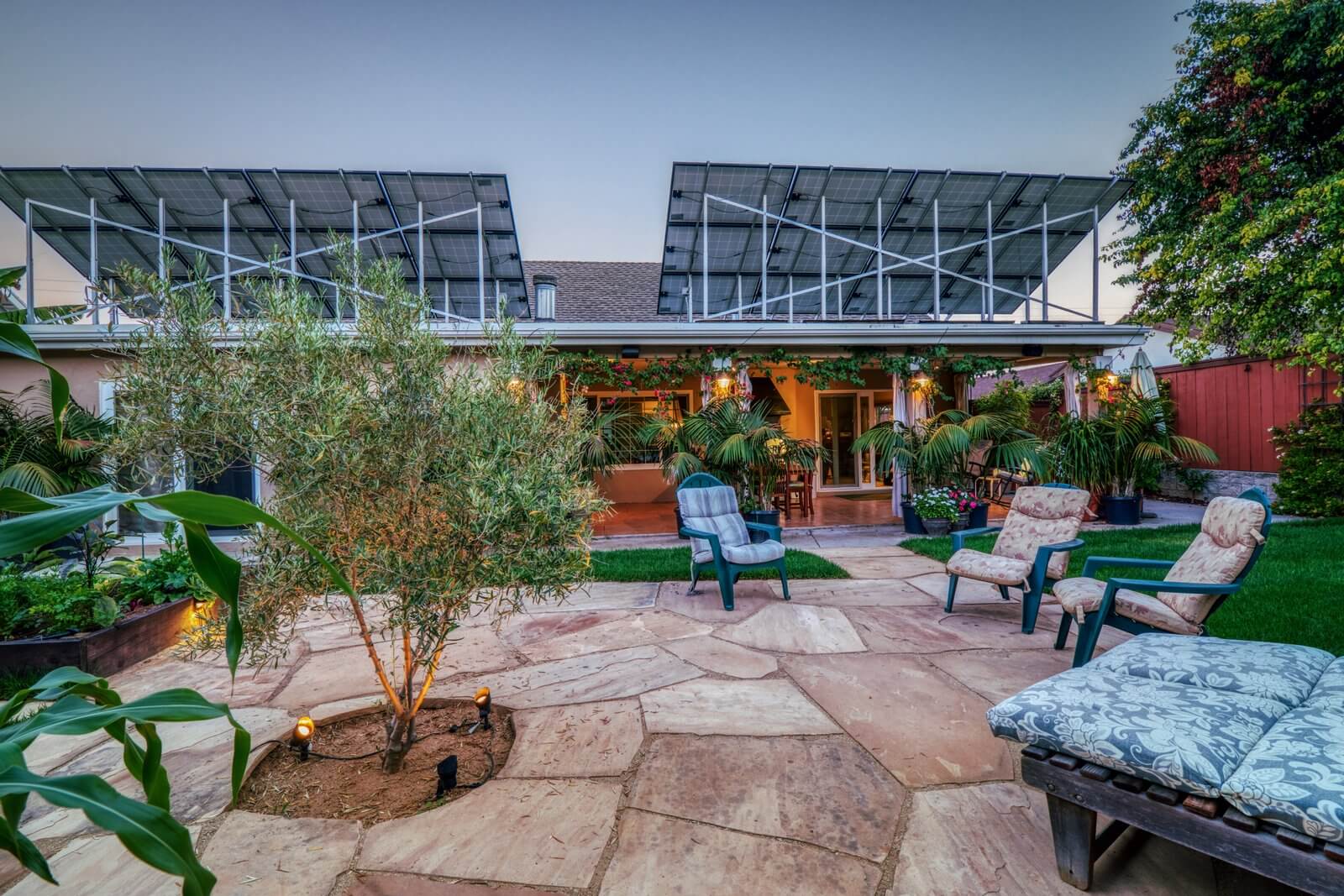
Eco-Friendly Materials and Hardscaping
When designing your backyard, prioritize eco-friendly materials for hardscaping elements like pathways, patios, and retaining walls. Opt for sustainable choices that minimize environmental impact while enhancing the aesthetic appeal of your outdoor space.
Consider the following eco-friendly material options:
- Recycled or Reclaimed Materials: Choose hardscaping materials made from recycled or reclaimed sources. These materials give a new life to existing resources, reducing the demand for new extraction and minimizing waste. Examples include recycled concrete pavers, reclaimed wood for decking or fencing, or salvaged stone for pathways and walls.
- Permeable Surfaces: Incorporate permeable surfaces in your hardscape design. These surfaces allow water to infiltrate into the soil instead of creating runoff, reducing the strain on stormwater systems and promoting groundwater recharge. Permeable options include permeable pavers, gravel or crushed stone pathways, or porous concrete.
- Environmentally Friendly Paving Options: Explore environmentally friendly paving alternatives that minimize heat absorption and contribute to a cooler outdoor environment. For instance, consider using lighter-colored paving materials or permeable surfaces that reduce the heat island effect and improve comfort in hot climates.
Wildlife-Friendly Features
Creating wildlife-friendly features in your backyard not only supports local biodiversity but also offers you the chance to observe and appreciate nature up close. By incorporating specific elements, you can attract and support various wildlife species.
You may be interested in adding the following features to your landscape:
- Install Bird Feeders
- Set up Bird Baths
- Create Butterfly Gardens
- Cluster Native Plants
- Provide Shelter Options
Choose Wilson Woodscape for Eco-Friendly Landscaping!
Ready to transform your backyard into a sustainable and wildlife-friendly oasis? Get started now and let Wilson Woodscape, your trusted landscape contractor in San Diego, assist you in creating a sustainable backyard that you can be proud of. Contact us today at (619) 838-1398 to schedule a consultation and take the first step toward your eco-friendly landscaping journey.

